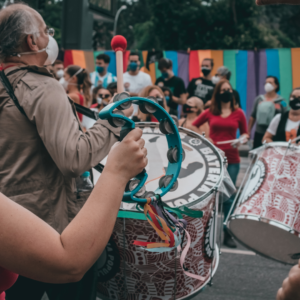Portrait photography captures the essence of individuals, revealing emotions, personalities, and stories. Mastering the art of portrait photography involves a blend of technical skills and a keen understanding of human expression. Each photograph serves as a window into the subject’s world, making the photographer’s role both challenging and rewarding.
Great portrait photography is not just about equipment; it requires an insightful approach to lighting, composition, and connection with the subject. A skilled photographer can create compelling images by using various techniques to engage with their subjects, encouraging authentic expressions that resonate with viewers.
As one delves into the nuances of portrait photography, they discover countless opportunities for artistic expression and personal growth. Through practice and experimentation, photographers of all levels can elevate their craft, transforming simple images into powerful narratives.
Understanding Portrait Photography
Portrait photography serves as a unique intersection of art and storytelling, capturing the essence of subjects through various styles and techniques. This genre emphasizes character and emotion, enabling photographers to create connections between the viewer and the subject.
Defining the Genre
Portrait photography focuses on capturing individual personalities and emotions. It encompasses multiple types, including:
- Self-portraits: The photographer is the subject, often revealing personal insights.
- Environmental portraits: Subjects are featured in their surroundings, offering context about their lives.
- Studio portraits: Controlled settings allow for precise lighting and arrangement.
- Formal portraits: Typically feature posed subjects in settings like schools or businesses.
- Candid portraits: Capture genuine moments without staged involvement.
- Informal portraits: Provide a relaxed atmosphere, often conveying natural interactions.
- Black and white portraits: Emphasize contrasts, highlighting texture and emotion.
Each type serves distinct purposes, showcasing the adaptability of portrait photography as an art form.
Historical Perspectives
The history of portrait photography dates back to the invention of the daguerreotype in 1839, which marked a significant turn in capturing likenesses. Initially, the process was lengthy and required subjects to hold still for extended periods, influencing the styles prevalent at the time.
As technology advanced, portrait photography evolved into various forms, including documentary photography. This genre highlights real-life situations and can provoke thought, illustrating societal stories through personal experiences. The transition from early techniques to modern digital photography reflects changes in techniques and artistic expression, expanding the ways in which subjects are represented.
Technical Aspects of Portrait Photography
Understanding the technical aspects of portrait photography is crucial for capturing compelling images. This section covers key elements such as camera settings, lighting techniques, and foundational composition principles that contribute to successful portrait photography.
Mastering Camera Settings
Camera settings play a vital role in achieving high-quality portraits. The aperture setting controls the depth of field. A wider aperture (e.g., f/1.8) creates a blurred background, isolating the subject effectively. Conversely, a smaller aperture (e.g., f/16) increases depth, suitable for group portraits.
Shutter speed must be adjusted based on lighting conditions and subject movement. A speed of at least 1/125 seconds is recommended to avoid motion blur.
ISO settings influence light sensitivity. For bright conditions, use low ISO (100-400). In low light, increase ISO (800 or higher), but be cautious of noise. Balancing these settings enhances exposure, resulting in sharp and clear portraits.
Lighting and Equipment
Lighting establishes mood and can define a portrait’s character. Natural light is often preferred for its softness and warmth. Photographers should utilize golden hour lighting—shortly after sunrise or before sunset—for optimal results.
Artificial light sources, like softboxes and umbrellas, can mimic natural light while providing more control. Flash should be diffused to prevent harsh shadows.
Key lighting techniques include Rembrandt lighting, where light falls on one side of the face, and split lighting, creating a stark contrast. It’s essential to assess the environment and choose equipment that complements the desired effect.
Composition Fundamentals
Effective composition enhances portrait imagery. The Rule of Thirds is a basic guideline. Placing the subject off-center can create a more engaging composition by drawing the viewer’s eye.
Leading lines guide attention toward the subject. These can be found in natural elements, like roads trees, or man-made structures.
Framing is another crucial technique. This involves using elements in the surroundings—like windows or doorways—to encase the subject. These methods add depth and interest, making portraits visually compelling. Adapting composition strategies based on the environment fosters creativity and uniqueness in portrait photography.
Creative Exploration in Portrait Photography
Portrait photography thrives on creative exploration, allowing the photographer to capture unique stories and emotions. A skilled photographer navigates posing and interaction, as well as the portrayal of personality and mood in each shot.
Posing and Interaction
Posing plays a critical role in portrait photography. Appropriate poses can enhance the subject’s features, create visual interest, and convey a specific narrative. Techniques like guiding the subject into natural stances or using props can facilitate distinctive expressions.
Effective communication is essential during this process. The photographer needs to foster a relaxed atmosphere, encouraging the subject to engage authentically. Candid moments often emerge from comfortable interactions, capturing genuine emotions.
Additionally, using various angles can dramatically alter the composition and mood. Experimenting with high and low angles or unconventional framing can result in captivating portraits that tell a story.
Conveying Emotion and Personality
Emotion is at the heart of impactful portrait photography. Through sensitivity and empathy, a photographer can evoke authenticity in the subject. Understanding the individual’s personality helps tailor the session to reflect their unique traits.
Lighting, background, and context contribute significantly to mood. Soft lighting may convey warmth, while shadows can evoke drama. The right environment also enhances storytelling, adding depth to the portrayal.
Incorporating elements that resonate with the subject’s interests can enrich the composition. This approach not only captures personality but also creates an emotional connection with the viewer, making the portrait more engaging and relatable.
Post-Processing and Presentation
Post-processing plays a crucial role in enhancing portrait photography. Careful editing can elevate a compelling portrait by refining its details and overall aesthetic. The right techniques and software ensure that the final image meets the photographer’s vision.
Editing Workflow
An effective editing workflow is essential for achieving remarkable results. Adobe Lightroom and Photoshop are popular choices for portrait editing. Lightroom allows for batch processing, making it time-efficient to adjust exposure, contrast, and color balance across multiple images.
Begin by importing photos into Lightroom. Use the Library module for organization, then switch to the Develop module for adjustments. Key techniques include:
- Exposure adjustment: Ensure the subject’s features are well-lit.
- White balance correction: Achieve natural skin tones.
- Cropping and composition: Improve framing to draw attention to the subject.
After refining the basic image, additional editing in Photoshop can address specific details.
Refining the Image
Refining an image incorporates advanced techniques that enhance the subject while maintaining realism. Key aspects include retouching, sharpening, and noise reduction.
In retouching, tools like the Healing Brush or Clone Stamp effectively remove blemishes and distractions. Care must be taken to avoid over-editing, which can lead to unnatural results.
Sharpening helps define edges and enhance detail. It is typically applied selectively to avoid artifacts in other areas. Noise reduction techniques minimize grain, especially in high ISO images, ensuring a smooth finish.
Finally, proper presentation is vital. Export options in formats like JPEG or TIFF can enrich display quality. Consider how the image will be shared or printed, as this affects resolution settings.





